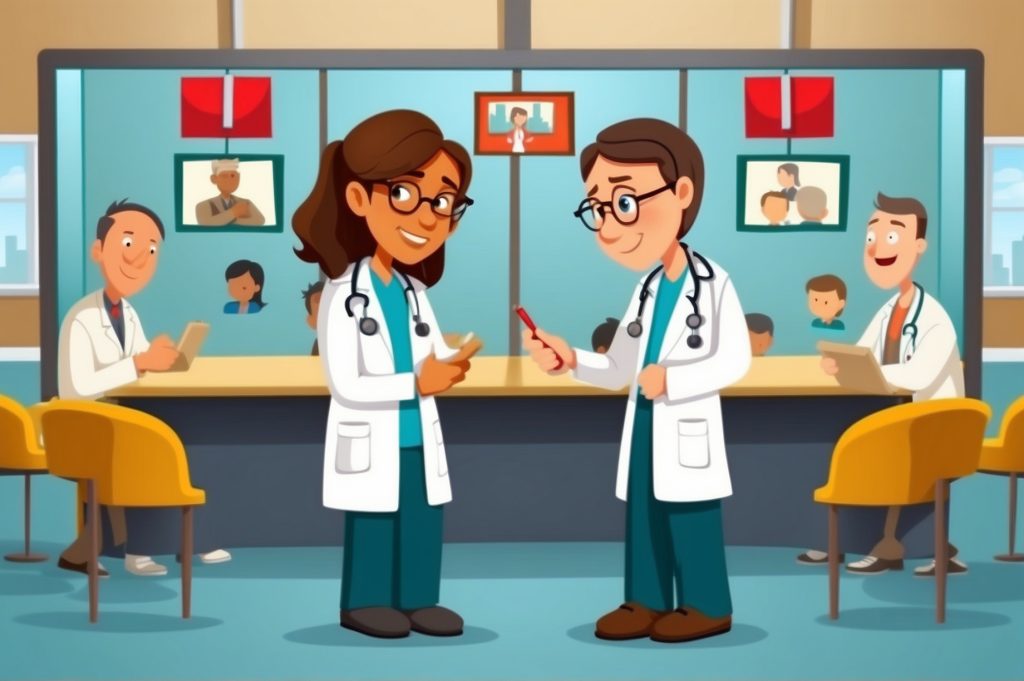Developing students’ critical thinking and clinical reasoning through problem-based assessment

Dr Lynette Pretorius
Contact details
Dr Lynette Pretorius is an award-winning educator and researcher specialising in doctoral education, academic identity, student wellbeing, AI literacy, research skills, and research methodologies.
In clinical education, the challenge is to not just impart content knowledge, but also help students develop critical real-world clinical skills. This is particularly true when it comes to critical thinking and clinical reasoning skills. In a paper I recently wrote with colleagues from a midwifery unit, we demonstrate how constructive alignment of a course’s graduate attributes and a unit’s learning experiences and assessment tasks can help students develop clinical reasoning skills.
Critical thinking and clinical reasoning are foundational skills in midwifery for several reasons:
- Complex decision-making: Midwifery involves making decisions in complex, often unpredictable situations. Critical thinking and clinical reasoning enable midwives to assess and interpret patient data, consider various options, and make informed decisions that ensure the best outcomes for their patients.
- Adapting to diverse scenarios: Every childbirth is unique, and midwives encounter a wide range of scenarios. Critical thinking and clinical reasoning equip them with the ability to adapt their knowledge to different contexts and provide tailored care based on individual needs and circumstances.
- Safety and quality of care: Good critical thinking and clinical reasoning are key to patient safety and the quality of care. It allows midwives to identify and respond to potential complications promptly and effectively, which is vital in a field where situations can change rapidly and have critical consequences.
- Holistic patient care: Midwifery is not just about the physical aspects of childbirth; it encompasses the emotional, psychological, and social well-being of the patient and their family. Critical thinking and clinical reasoning help midwives to consider all these aspects in their care, leading to more comprehensive and personalised support.
- Lifelong learning and professional development: Midwifery, like all healthcare professions, is constantly evolving. Critical thinking and clinical reasoning are essential for midwives to engage in continuous learning, keep up with the latest evidence and practices, and refine their skills over time.
- Collaborative practice: Midwifery often involves working in teams with other healthcare professionals. Critical thinking and clinical reasoning are important for effective communication and collaboration, ensuring that all team members are aligned in their approach to patient care.
Consequently, midwifery educators need to develop curricula which balance academic content with skills development. This is also true for assessment tasks. Traditionally, assessment tasks in midwifery have revolved around essay questions, which often fail to test students’ clinical reasoning and decision-making skills. Recognising this gap, we embarked on a curriculum redesign journey, aiming to make our assessment task more clinically relevant using problem-based learning.
We wanted to make our assignment more problem-based, as there is ample evidence that real-world scenarios can make students’ education more clinically relevant. We believe real-world scenarios are useful for several reasons:
- Bridging theory and practice: Assessments that mirror real-world scenarios enable students to apply theoretical knowledge in practical contexts. This helps to bridge the gap between what they learn in the classroom and what they will encounter in their professional lives, making their education more relevant and effective.
- Developing critical thinking: Real-world-focused assessments often require critical thinking, problem-solving, decision-making, and other key skills that are essential in professional settings. By incorporating these elements into assessments, educators ensure that students are not just learning information, but are also developing the skills they need to use that information effectively.
- Encouraging active learning: Real-world assessments often involve active, experiential learning, which is typically more engaging and effective than passive learning methods. This can lead to a deeper understanding of the subject matter and a more enjoyable learning experience for students.
- Fostering lifelong learning: In the rapidly changing modern world, the ability to learn and adapt is crucial. Real-world assessments encourage students to be self-directed learners who can seek out information, analyse problems, and find solutions independently.
- Preparing for professional challenges: The workplace presents challenges that are often complex and unpredictable. Assessments that simulate real-world situations prepare students for these challenges, equipping them with the experience and confidence to handle similar situations in their future careers.
To achieve our goals, we needed to constructively align our assessment tasks, learning outcomes, and learning activities. This helped us ensure that the outcomes we hoped to achieve with our unit were effectively developed in our classroom activities and that our assessment tasks actually assessed the skills we taught. To help us constructively align our assessment task to the learning outcomes of the unit, we utilised the Research Skills Development (RSD) framework.
We changed the previous essay-based assessment task into a scenario-based question, requiring students to apply clinical reasoning to a specific case, as shown below.
Lola is a G1P0, EDC 16/4/2012, singleton pregnancy, positive blood group, currently taking pregnancy multivitamins, she has attended the routine schedule of antenatal care with no adverse issues identified. Lola presents to your maternity unit at 10:30hrs with a history of irregular contractions since 02:30hrs, with contractions now becoming regular at four minutely intervals. Lola’s membranes ruptured at 01:00hrs with clear liquor draining. On admission the abdominal palpation reveals a baby presenting in a right occipito-posterior position (ROP), with the fetal head 3/5ths above the pelvic brim. A vaginal examination is performed, with the cervix found to be posterior, 1-2cms long, 2cms dilated, station -2, and membranes are confirmed ruptured. Critically discuss the care required for the laboring woman with the fetus presenting in an occipito-posterior position, including possible outcomes this woman may expect.
This case was designed to test a broad range of competencies, including critical thinking and clinical reasoning in complex clinical situations. These students had not previously had a similar assignment in their course. By consulting the RSD framework, we decided to target the assessment at Level IV, encouraging students to research and analyse the scenario themselves, but with some structured guidance. As a result, an assignment preparation session was also conducted to examine the scenario-based question in a peer learning environment. Consequently, interactive group discussions were used to analyse the assessment task and decide how to best approach the assignment. The three discussion prompts used in the class are listed below:
“What are the key symptoms or features in this case?”
“What do the key symptoms mean?”
“How will I care for Lola?”
Students were encouraged to work in groups to decide on appropriate answers to these questions, and they were then asked to present their ideas to the class. Discussion between the groups was used to
foster the investigation of different opinions and ideas.
The implementation of this new assessment approach was met with positive feedback from both students and staff. The scenario-based question was appreciated for its clinical relevance, and the structured guidance helped students focus on critical aspects of midwifery care. This suggests that students were more concerned with understanding the implications of the case for clinical practice than simply answering the question, reflecting a deeper level of engagement and critical thinking.
The study also provided insights into the feedback process following the assessment. Students received extensive, focused feedback from the academics who marked the assignments. Several students also engaged with the optional opportunity to meet with the lecturers after receiving the feedback, seeking verbal insights into their performance. Students highlighted that the feedback they received was useful in helping them know how to improve in the future. Staff found that the feedback they provided on assignments indicated that the new approach led to a deeper engagement with the content and a better understanding of clinical reasoning.
A marking rubric was developed to accurately assess the research skills developed as part of this process. This marking rubric is freely available and can be used by other educators as needed. It can be found here (pages 386-387).
By shifting from traditional essay-based tasks to scenario-based questions aligned with the RSD framework and constructive alignment theory, we succeeded in enhancing student engagement, critical thinking, and clinical reasoning skills. Students benefit from an educational approach that prepares them for real-world challenges, fostering skills that are directly applicable to their future professional practice. This study also offers a framework for integrating educational theories into the design of practical assessment tasks and rubrics, which can be useful for other educators.
Questions to ponder
What are some of the key factors in assessment design that can encourage deeper learning and critical thinking in students?
In what ways could this approach to curriculum design impact the quality of healthcare provided by future graduates in clinical settings?

Join my 22 subscribers!
